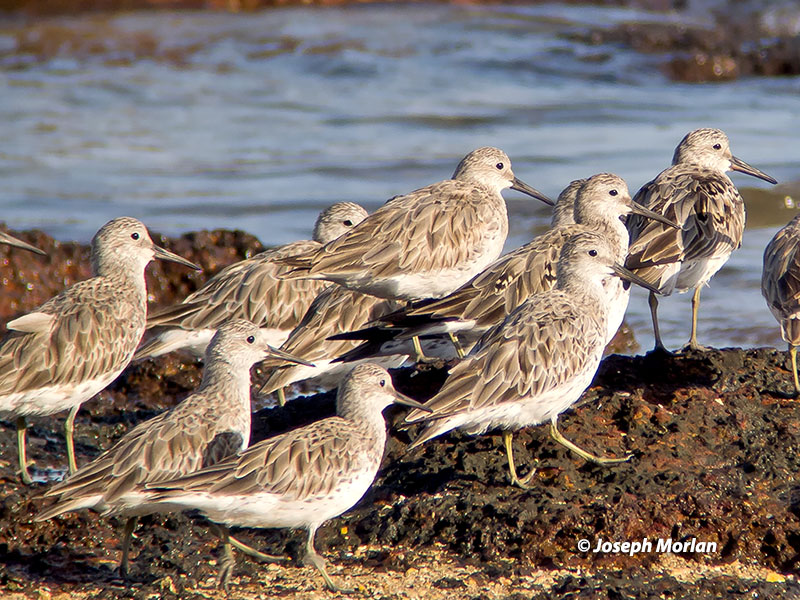

This was easily the most common shorebird at East Point. It is the world's largest member of the Calidris genus. Despite good numbers still wintering in Australia, this species is listed as "vulnerable" by the IUCN. In 2009, the "reclamation" of the tidal flats at Saemanguem, South Korea resulted in a loss of c.90,000 non-breeding individuals, more than a quarter of the world's population. This project, the world's largest seawall has also seriously imperiled the Nordmann's Greenshank and Spoon-billed Sandpiper. Although this is a non-breeding visitor to Australia from breeding grounds in Siberia, some immature birds remain through the northern summer.
Digiscoped with Panasonic DMC-LZ5 | Nikon FieldScope III | 30XWA | hand-held (no adapter)